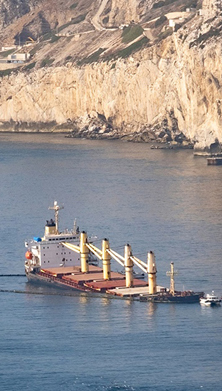1. Introduction
Corporate supply chains have become ever more complex. Today, an estimate of 80% of global trade passes through supply chains. Outsourcing production to suppliers in countries with a cost advantage can deliver significant economic benefits.
Yet, complex and bigger supply chains are prone to risks. More specifically, environmental, Social and Governance (ESG) issues can carry significant reputational and operational risks.
2. ESG risks in supply chains
Traditional key considerations in supply chains include technical quality, cost effectiveness, speed of delivery and reliability. However, sustainability factors are increasingly gaining importance. Examples include:
- Environmental pollution
- Shortages of raw material and natural resources
- Workforce health and safety incidents
- Labor disputes
- Corruption and bribery
- Geopolitical considerations

3. Case study: Textile Industry
The value chain of apparel and textile is complex and involves many actors. The industry tends to be dominated by a relatively small number of multinational retail companies that have significant influence along the entire value chain. The value chain includes raw material supply like growing natural fibers or manufacturing synthetic ones, textile manufacturing of the yarns, clothing manufacturing, export and distribution and lastly marketing and retail.
Being a labor-intensive sector, many steps of the value chain take place in developing and emerging markets. While consumers only interact with the final brand, which market the clothing, second and subsequent tier suppliers are little known.

Raw material supply
Cotton is a key input in the textile industry. The largest growers are China, the U.S., Pakistan, Brazil and Uzbekistan. Cultivation is water intensive and like the entire agricultural sector exposed to risks from climate change, e.g. extreme weather and water stress. As a result commodity prices are increasingly volatile and shortages of raw materials can dramatically impact supply chains of clothing manufacturers.
The 2010 flood in Pakistan devastated large areas of productive land and cotton prices skyrocketed after they had been relatively stable for about 10 years. A tool to identify, quantify/ monetize and manage related supply chain risks is Natural Capital Accounting. Also improved water management systems and considering alternative inputs such as recycling cotton or synthetic fibers can help to diversify inputs, finally creating more resilient supply chains.


Clothing manufacturing
The collapse of the Rana Plaza building in Dhaka, Bangladesh, in 2013 led to the death of more than 1,100 workers. The event put high public pressure on international clothing retailers questioning the entire industry practice, independent of whether they had sourced from this facility.
Poor safety and worker standards, amongst others, can lead to:
- Lost inventory and interrupted production
- Legal costs
- Worker unrest
- Regulatory and public pressure to strengthen sourcing policies
- Compliance cost regarding new legislation
- Sales decrease
Multinational retail brands can lead by example by adopting clear policies accompanied by stringent enforcement.


4. Improving supply chains management systems
Understanding the environmental, social and economic impacts of a company’s products and services along the entire life-cycle is key to identify potential risks. Key performance indicators for suppliers help understanding and managing these risks.
Codes of conduct in supplier contracts and incentive structures can improve awareness and eventually performance. Furthermore, collaboration with industry peers, civil society and regulatory authorities is also important to effectively manage existing and emerging ESG supply chain risks.

5. Benefits of risk reduction
Authors
Isabel Bodlak-Karg
Severin Buchwald
References
EY, “The state of sustainable supply chains”
United Nations Global Compact, “A guide to traceability”
United Nations Global Compact, “Supply chain sustainability”
Deloitte, “The stake are rising: Integrating ESG into the supply chain”
Trucost, “The colour of this season is green”
The role of AGCS
Insurers provide traditional risk transfer for supply chain risks by providing insurance solutions such as for business interruptions. Moreover, AGCS supports its clients to identify and assess material ESG issues along the supply chain and develops recommendations on how to mitigate these risks. In a fast changing world, AGCS identifies emerging issues and develops risk management strategies. Our consulting team is available at: AgcsSustainability@allianz.com
We are dedicated to deliver the best possible solutions to the management, control and reduction of ESG risks.
Newsletter
Keep up to date on all news and insights from AGCS















